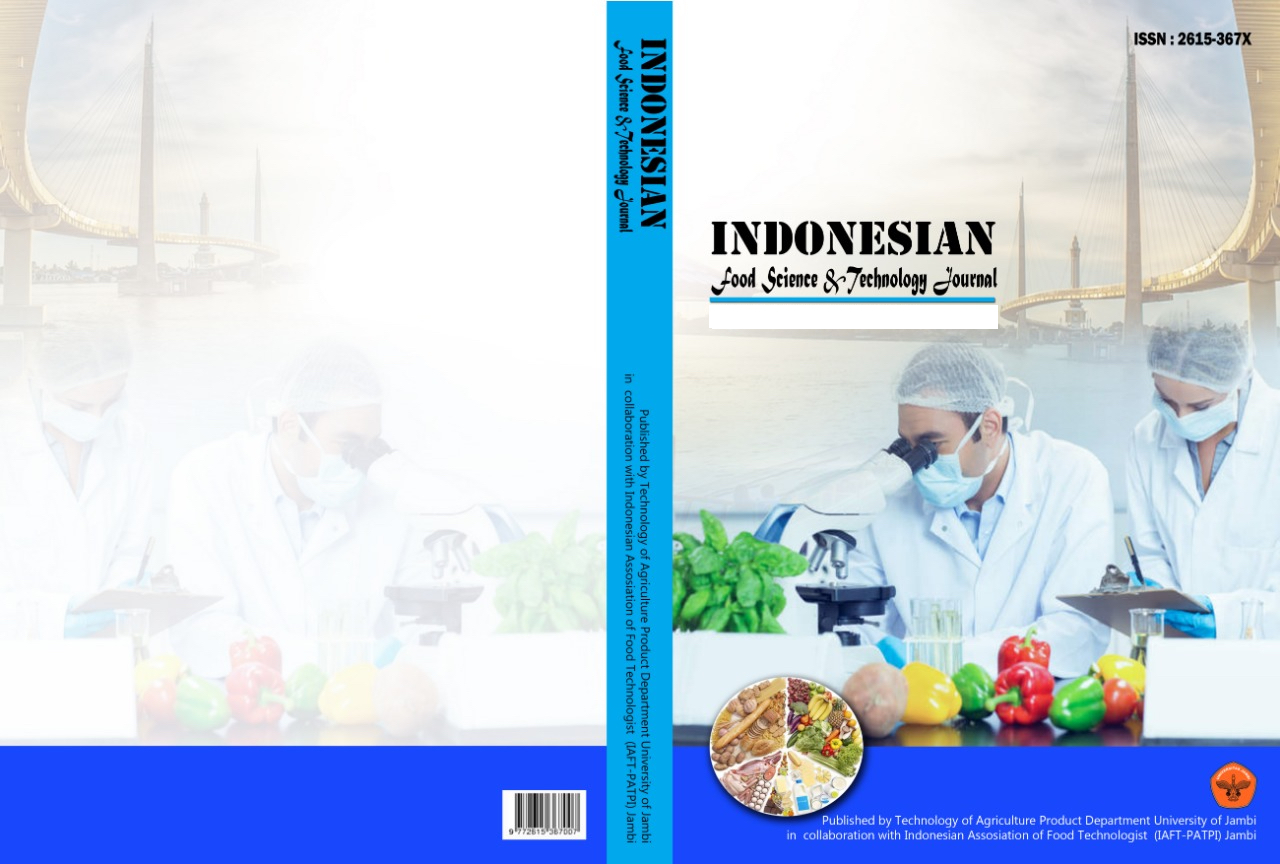Energy potential from Areca Palm through Direct Combustion and Pyrolysis in Indonesia: A review
DOI:
https://doi.org/10.22437/ifstj.v4i1.11200Keywords:
Areca palm, renewable energy, Areca palm empty-shell, alternative energyAbstract
Global warming that occurs due to rapid population growth and increasing of energy consumption makes energy supply decreases. Energy source from non-renewable energy (fossil fuel) cause increasing greenhouse gas emission level and scarcity of natural resources. This paper reports that agricultural residues especially areca palm wastes had been widely used as an alternative energy source to reducing fossil fuel consumption. About 4.780.000 tones areca palm produced per year around the world and the shell was burned in open air or just thrown in the environment. This work aimed to investigate energy potential from areca palm shell using direct combustion and pyrolysis method also do analysis about this technology from environmental point of view and that contribution for sustainable uses.
Downloads
References
REFERENCES
S. Elanthikkal, T. Francis, S. Akhtar, Utilization of Areca Nut Leaf Sheath Fibers for the Extraction of Cellulose Whiskers, J. Nat. Fibers. (2019) 1–13. https://doi.org/10.1080/15440478.2019.1689885.
P. V. Gokul, P. Singh, V.P. Singh, A.N. Sawarkar, Thermal behavior and kinetics of pyrolysis of areca nut husk, Energy Sources, Part A Recover. Util. Environ. Eff. (2019) 1–11. https://doi.org/10.1080/15567036.2019.1582733.
A.M. Adel, A.A. El-Gendy, M.A. Diab, R.E. Abou-Zeid, W.K. El-Zawawy, A. Dufresne, Microfibrillated cellulose from agricultural residues. Part I: Papermaking application, Ind. Crops Prod. 93 (2016) 161–174. https://doi.org/10.1016/j.indcrop.2016.04.043.
R. Saidur, E.A. Abdelaziz, A. Demirbas, M.S. Hossain, S. Mekhilef, A review on biomass as a fuel for boilers, Renew. Sustain. Energy Rev. 15 (2011) 2262–2289. https://doi.org/10.1016/j.rser.2011.02.015.
M. Ramesh, K. Palanikumar, K.H. Reddy, Plant fibre based bio-composites: Sustainable and renewable green materials, Renew. Sustain. Energy Rev. 79 (2017) 558–584. https://doi.org/10.1016/j.rser.2017.05.094.
M. Ranjith, T. Harish, Environmental benefits of cement and areca nut husk ash on behavior of clay and red clay, Int. J. Recent Technol. Eng. 8 (2019) 4158–4163. https://doi.org/10.35940/ijrte.C5491.098319.
G.W. Staples, R.F. Bevacqua, Areca catechu (betel nut palm), 2006. http://entheology.com/plants/areca-catechu-betel-nut/.
Mi. Baiti, S. Elfrida, L. Lipinwati, Pengaruh Pemberian Ekstrak Ethanol Biji Buah Pinang (Areca Catechu L.) Terhadap Pertumbuhan Staphylococus Aureus Secara in Vitro, JAMBI Med. J. “Jurnal Kedokt. Dan Kesehatan.†6 (2018) 10–19. https://doi.org/10.22437/jmj.v6i1.4817.
S. Nayak, J.R. Mohanty, Influence of chemical treatment on tensile strength, water absorption, surface morphology, and thermal analysis of areca sheath fibers, J. Nat. Fibers. (2018) 1–11. https://doi.org/10.1080/15440478.2018.1430650.
G. Sołowski, International Journal of Bioprocessing and Biotechniques Biohydrogen Production -Sources and Methods: A Review, Int J Bioprocess Biotech. 2018 (2018) 1–22. https://doi.org/10.20911/IJBBT-101.
K. Palanichamy, A. Ariharaputhiran, Areca leaves as a source of carbon: Preliminary investigation as catalyst support for electrolytic hydrogen evolution in acidic medium, Int. J. Hydrogen Energy. 38 (2013) 2263–2270. https://doi.org/10.1016/j.ijhydene.2012.12.003.
S. Ujjinappa, L.K. Sreepathi, Evaluation of physico-mechanical-combustion characteristics of fuel briquettes made from blends of areca nut husk, simarouba seed shell and black liquor, Int. J. Renew. Energy Dev. 7 (2018) 131–137. https://doi.org/10.14710/ijred.7.2.131-137.
Shwethan, Kotrashetti, Reddy, C. Babu, Estimation of the Major Constituents of Arecanut in Its Different Forms, Austin J. Nutr. Food Sci. 7 (2019) 1–5.
L. Yusriah, S.M. Sapuan, E.S. Zainudin, M. Mariatti, Exploring the Potential of Betel Nut Husk Fiber as Reinforcement in Polymer Composites: Effect of Fiber Maturity, Procedia Chem. 4 (2012) 87–94. https://doi.org/10.1016/j.proche.2012.06.013.
R. Nagaraja, B.R. Gurumurthy, M.B. Shivanna, Bio Softening of Arecanut Waste Areca Husk, Leaf and Leaf Sheath For Value Added Compost, IMPACT Int. J. Res. Appl. Nat. Soc. Sci. 2 (2014) 105–112.
K.B. Deepak, B.J. Manujesh, Vivek, B.K. Yashas, Development and study of fuel briquettes from areca leaves: A potential renewable energy source, AIP Conf. Proc. 2080 (2019) 1–8. https://doi.org/10.1063/1.5092907.
P. Poddar, M. Islam, S. Sultana, H. Nur, A. Chowdhury, Mechanical and Thermal Properties of Short Arecanut Leaf Sheath Fiber Reinforced Polypropyline Composites: TGA, DSC and SEM Analysis, J. Mater. Sci. Eng. 5 (2016) 1–7. https://doi.org/10.4172/2169-0022.1000270.
L. Yusriah, S.M. Sapuan, E.S. Zainudin, M. Mariatti, Characterization of physical, mechanical, thermal and morphological properties of agro-waste betel nut (Areca catechu) husk fibre, J. Clean. Prod. 72 (2014) 174–180. https://doi.org/10.1016/j.jclepro.2014.02.025.
V. Jain, A. Garg, M. Parascandola, P. Chaturvedi, S.S. Khariwala, I. Stepanov, Analysis of Alkaloids in Areca Nut-Containing Products by Liquid Chromatography-Tandem Mass-Spectrometry, J Agric Food Chem. 65 (2017) 1977–1983. https://doi.org/10.1021/acs.jafc.6b05140.Analysis.
Y. Lazim, S.M. Salit, E.S. Zainudin, M. Mustapha, M. Jawaid, Effect of alkali treatment on the physical, mechanical, and morphological properties of waste betel nut (Areca catechu) husk fibre, BioResources. 9 (2014) 7721–7736. https://doi.org/10.15376/biores.9.4.7721-7736.
S.B. Kontor, Potential of Biomass Gasification and Combustion Technology for Small- and Medium-Scale Applications in Ghana, Vaasa, Finlandia, 2013. http://www.theseus.fi/bitstream/handle/10024/68470/Kontor Boakye Solomon.pdf?sequence=1.
S. Sasmal, V. V. Goud, K. Mohanty, Determination of salutary parameters to facilitate bio-energy production from three uncommon biomasses using thermogravimetric analysis, J. Therm. Anal. Calorim. 111 (2013) 1649–1655. https://doi.org/10.1007/s10973-011-1891-0.
K. Ridhuan, D. Irawan, Y. Zanaria, F. Firmansyah, Pengaruh Jenis Biomassa Pada Pembakaran Pirolisis Terhadap Karakteristik Dan Efisiensibioarang - Asap Cair Yang Dihasilkan, Media Mesin Maj. Tek. Mesin. 20 (2019) 18–27. https://doi.org/10.23917/mesin.v20i1.7976.
I. Quispe, R. Navia, R. Kahhat, Energy potential from rice husk through direct combustion and fast pyrolysis: A review, Waste Manag. 59 (2017) 200–210. https://doi.org/10.1016/j.wasman.2016.10.001.
A. Palamanit, P. Khongphakdi, Y. Tirawanichakul, N. Phusunti, Investigation of yields and qualities of pyrolysis products obtained from oil palm biomass using an agitated bed pyrolysis reactor, Biofuel Res. J. 24 (2019) 1065–1079. https://doi.org/10.18331/BRJ2019.6.4.3.
R. Kumar Mishra, K. Mohanty, Effect of low-cost catalysts on yield and properties of fuel from waste biomass for hydrocarbon-rich oil production, Mater. Sci. Energy Technol. 3 (2020) 526–535. https://doi.org/10.1016/j.mset.2020.05.007.
F. Vitali, S. Parmigiani, M. Vaccari, C. Collivignarelli, Agricultural waste as household fuel: Techno-economic assessment of a new rice-husk cookstove for developing countries, Waste Manag. 33 (2013) 2762–2770. https://doi.org/10.1016/j.wasman.2013.08.026.
P.K. Swain, L.M. Das, S.N. Naik, Biomass to liquid: A prospective challenge to research and development in 21st century, Renew. Sustain. Energy Rev. 15 (2011) 4917–4933. https://doi.org/10.1016/j.rser.2011.07.061.
A. Demirbas, Potential applications of renewable energy sources, biomass combustion problems in boiler power systems and combustion related environmental issues, Prog. Energy Combust. Sci. 31 (2005) 171–192. https://doi.org/10.1016/j.pecs.2005.02.002.
A.A. Khan, W. de Jong, P.J. Jansens, H. Spliethoff, Biomass combustion in fluidized bed boilers: Potential problems and remedies, Fuel Process. Technol. 90 (2009) 21–50. https://doi.org/10.1016/j.fuproc.2008.07.012.
D. Iribarren, J.F. Peters, J. Dufour, Life cycle assessment of transportation fuels from biomass pyrolysis, Fuel. 97 (2012) 812–821. https://doi.org/10.1016/j.fuel.2012.02.053.
T. Chen, C. Wu, R. Liu, W. Fei, S. Liu, Effect of hot vapor filtration on the characterization of bio-oil from rice husks with fast pyrolysis in a fluidized-bed reactor, Bioresour. Technol. 102 (2011) 6178–6185. https://doi.org/10.1016/j.biortech.2011.02.023.
Downloads
Published
How to Cite
Issue
Section
License
Copyright (c) 2021 Hendrix Yulis Setyawan, Sunaryo, Budi Waluyo, Merlya, Annisa'u Choirun, Addion Nizori, Sahrial

This work is licensed under a Creative Commons Attribution 4.0 International License.







